A selection from John Jones’s books, publications, writings and interviews
by John Jones, Jonathan Cape, 1976 (ed Michael Leitch)
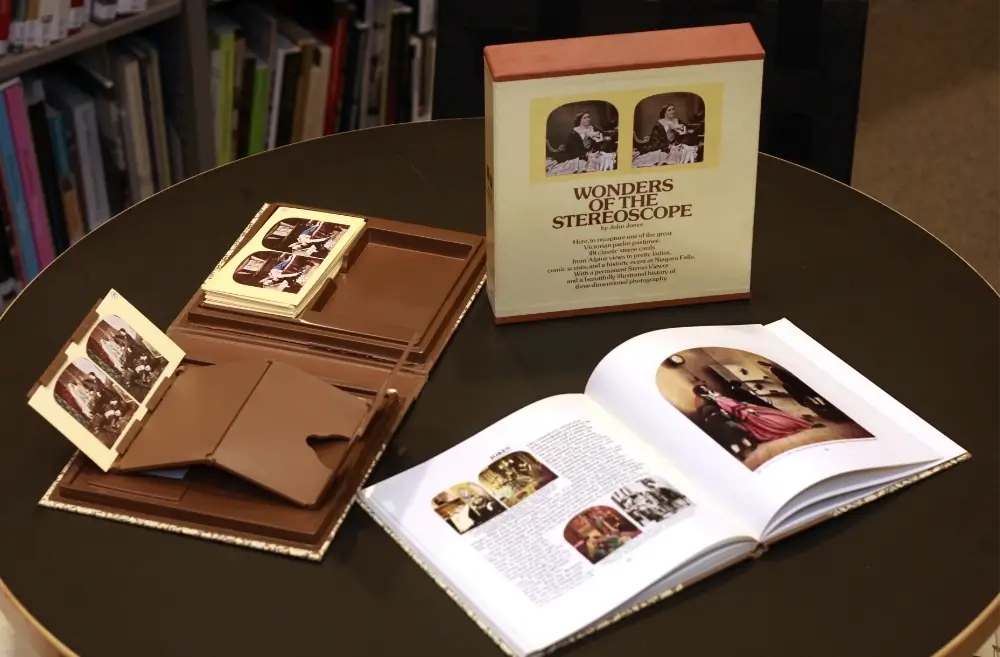

“Wonders of the Stereoscope is my favourite item I’ve seen come through the Old Bodleian reading rooms because of the sheer joy it provokes in the reading room team, as everyone shares in the camaraderie of learning a bizarre and intriguing new skill. The images provided by Wonders of the Stereoscope certainly don’t hurt, either – from Charles Blondin perilously balanced on a tightrope across the Niagara Falls, to a walrus in trousers kissing a man on the lips, the often hilarious variety of images provided endless amusement even before they were seen in 3-D!
“In addition to providing ample entertainment to Reading Room staff at the Old Bod, Wonders of the Stereoscope has raised a lot of interesting questions about perception and vision! . . . Can you ever be sure you’re seeing the same thing as someone else? How do you teach another person to see what you see?”
– Rhiannon Hartwell (Trainee at the Bodleian Library, 2020)
by John Jones
pp 141-145 The Lennon Companion edited by Elizabeth Thomson and David Gutman (Macmillan Press, 1987)
Yoko Ono’s critics – perhaps less vindictive in the years since Lennon’s death – have often blamed her for the break-up of The Beatles, though it appears the group’s days were numbered even before John Lennon met her. What is certainly untrue is the notion that she used John to break into the art world: she was in fact well known in avant-garde circles long before. Lennon’s celebrity simply brought her a wider, if not wholly appreciative, audience.
In September 1965 I began a year’s research in New York which involved recording interviews with American artists. We lived in Greenwich Village. I probably first read about Yoko Ono in the Village newspaper which I searched for artistic events that would give me quick access to the art scene. I remember getting up in the dark to attend a rooftop ‘happening’ at dawn. I found the house but couldn’t bring myself to knock on the door. I imagined the occupants might not take kindly to being woken by a foreigner who wanted to get onto the roof ‘for a happening’.
‘For a what?
‘A happening.’
‘Listen buddy – you know what time it is?’
Cont/d
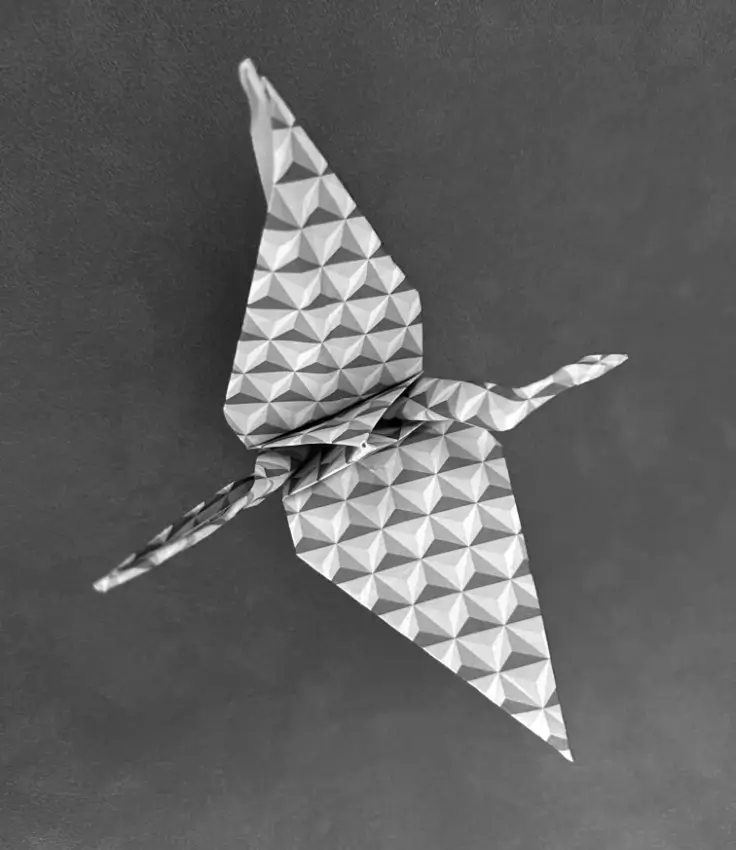
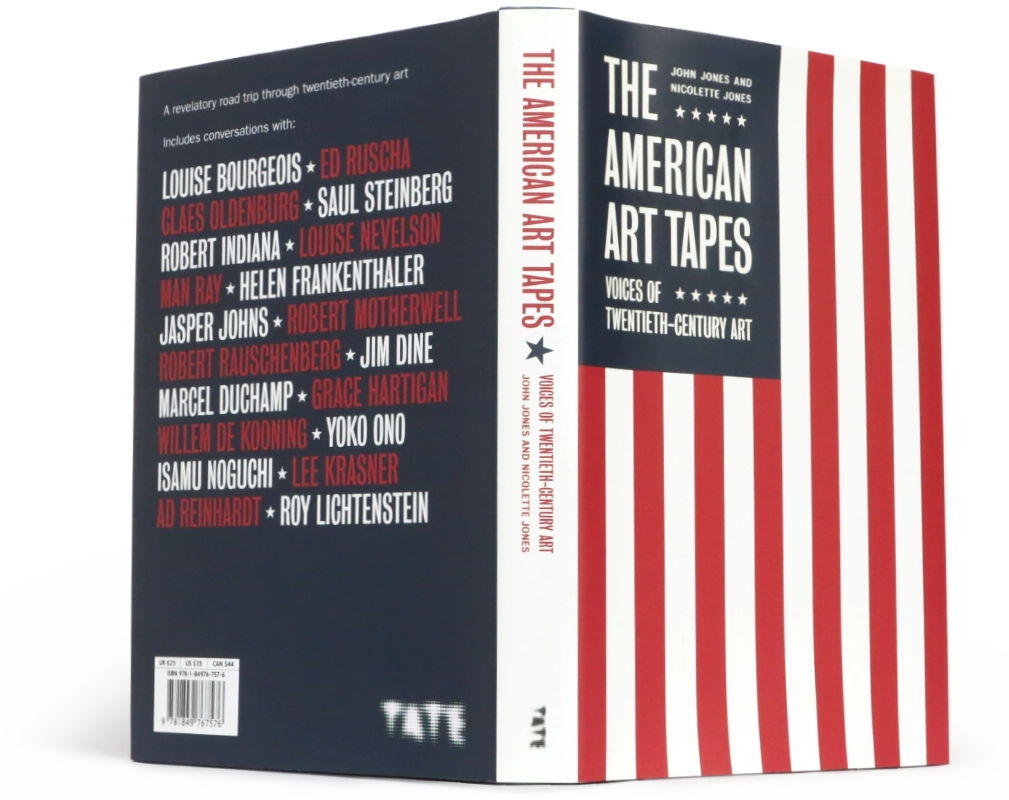
“Many spoke of the times they were living in – 1960s America, a political and cultural crucible”
by John Jones and Nicolette Jones, Tate Publishing, 2021
In 1965, British artist John Jones left the UK with his young family to live in the USA. There they settled in Greenwich Village, New York, and spent several months on a road trip west, seeking out artists and interviewing as many as they could. All revealed something unique about their work and practice. Many spoke of the times they were living in – 1960s America, a political and cultural crucible. Some (Claes Oldenburg and Yoko Ono, for instance) became Jones’s personal friends.
Published here for the first time, this book presents a fascinating selection of Jones’s conversations with those artists, as chosen by his daughter, Nicolette. This is the story of art presented not through the filter of art critics, but from the mouths of the practitioners. Featuring an array of well-known voices, including Marcel Duchamp, Man Ray, Louise Bourgeois, Lee Krasner, Jasper Johns and Robert Rauschenberg, The American Art Tapes offers an intimate portrait of the American art scene in the mid 1960s – a pivotal moment in twentieth-century art – and the thinking that gave rise to one of the most fertile creative periods in our recent history.
“All the artists I’d talked to had their reasons for doing what they did, and I had no inclination to judge one more ‘right’ than another. It was a sort of Babel or banquet of amusing arguments and serious manifestoes; very exhilarating to be in the middle of all that ferment and variety. Coming back here was like getting back into a wet bathing costume.” – John Jones
Listen here to BBC Radio 4’s Archive on 4 programme The American Art Tapes, about John Jones’s year of interviewing US artists.
Produced by Loftus Media, directed by Emma-Louise Williams and presented by Nicolette Jones:
An introduction to the Summer Sketchbook exhibition at Bradford and Ilkley Community College, 1983.
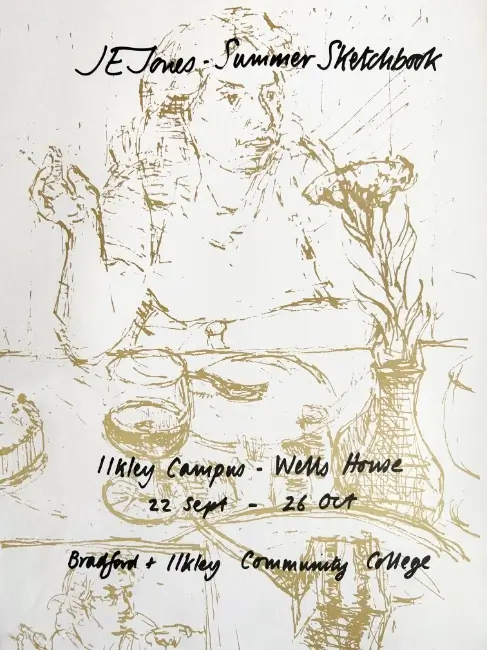
Sketchbooks have a bad name with artists, and ‘sketching’ is a word that my generation deplores. It implies a sloppy rendering of things half-heartedly observed (“Oh, it’s just a sketch”). ‘Drawing’ sounds more responsible although ‘drawing book’ smacks of classrooms of the past. ‘Work-book’ is too often merely an alias for a scrapbook of colour magazine cuttings and enigmatic phone numbers hastily jotted. So, lacking something better, ‘sketchbook’ it is.
Drawing was the first thing I was set to do at Art School when I was 16; ‘the antique’, ‘memory’, ‘anatomy’, and then ‘life’. Sketchbooks were to be carried everywhere, as obligatory as our gas masks (it was wartime).
Cont/d
John Jones edited the journal of the Magic Lantern Society of Great Britain for some years, and also contributed articles, including the following:
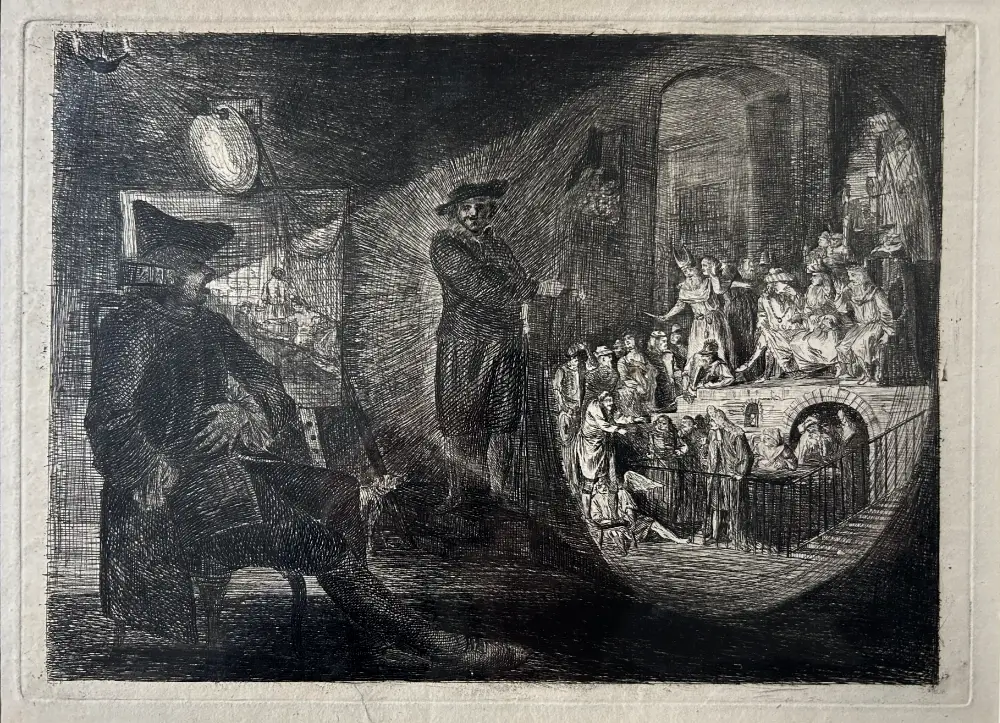
Hogarth as a Magic Lantern by Paul Sandby
A Noble Gift: The University of Leeds Collection of Photographs by Godfrey Bingley
by John Jones, University of Leeds Review, 1987
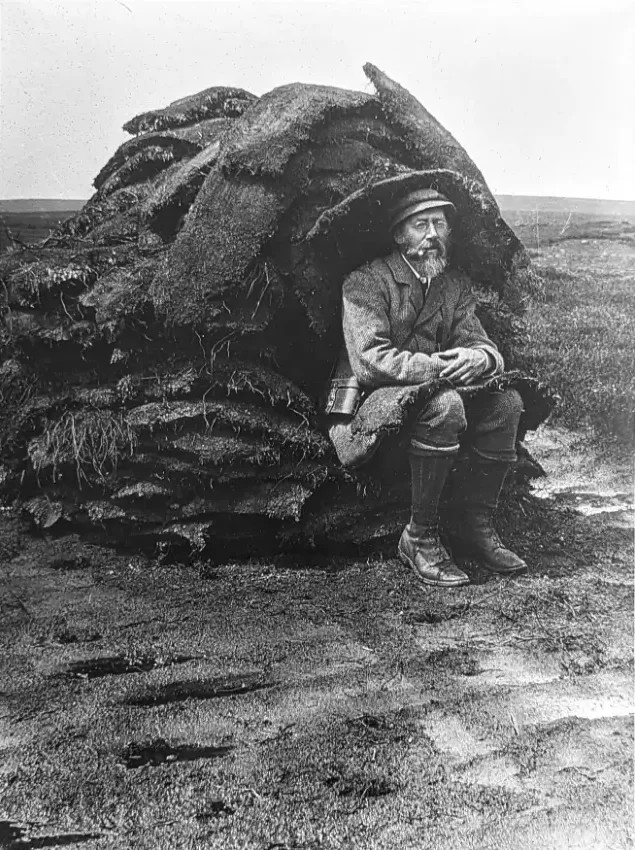
In 1913 Godfrey Bingley, a well-known amateur photographer, donated a huge collection of glass photographs to the University of Leeds.
The University has little information about his life other than what can be deduced from the photographic bequest, but there exist two small leather-covered books, a ‘record of family and other events’, in which, in his handwriting and unmistakable cryptic style, the barest data about him are set down. The earlier part of the ‘record’ gives dates of birth and death of his recent ancestors and on the first page is a pencil drawing of the coat of arms, labelled ‘Bingley (Yorkshire)’ the crest of which he appears to have had printed as his private letter heading. In fact he had no right to either crest or coat of arms, which are not of the Bingley family but of Robert Benson, who was made Baron Bingley (after the place) in 1713 and who died in 1730 with no issue, so the coat of arms did too.
Cont/d
by John Jones
Leeds Art Calendar no 85, 1979
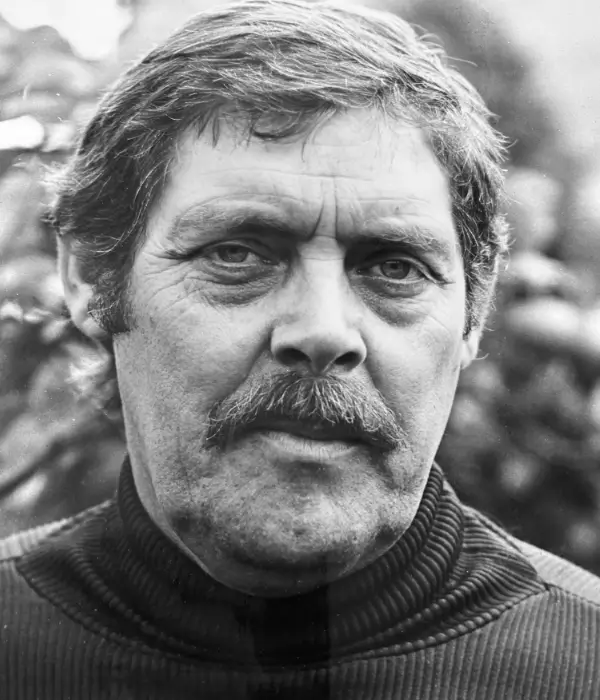
John Jones’s close friend, the sculptor Hubert ‘Nibs’ Dalwood, died in 1976.
Jones filmed Dalwood teaching and transcribed his instructions to students from the soundtrack for this article in the Leeds Art Calendar in 1979.
You can download a pdf here.
John Jones’s piece is on page 25.
‘A need for maturity.’ Letter from John Jones, 1975
The tone of John Wellington’s piece on Michael Dawson’s defence of Austin Wright’s sculpture on Roppa Moor (EP, October 7) is dismissive and querulous. Why does the Evening Post invariably take up this position on all but the most conventional art? This is not a rhetorical question.
I think it is a philistine attitude, but rather than swap insults I’d truly like a considered explanation. It seems to me that in a city which, like many others, is being spoiled for lack of art, there should be a more mature inquiring approach to the efforts that its artists make.
Michael Dawson is a man of unswerving integrity and Austin Wright is an intelligent artist whose whole life has been dedicated to the practice of sculpture. The contribution they can make to Yorkshire life is considerable and valuable. Neither relishes or seeks to provoke the hostility of press and public. They act in accordance with the most carefully considered set of values and deep knowledge and experience or their subject. They deserve a better reception.
I think a Yorkshire newspaper should be proud to do all it can to foster an understanding of what these men do and say for art in the county.
There is not space to embark on a serious account of Austin Wright’s work here, but if there were, I would be glad if I could initiate a debate in your columns about any local artistic endeavour which honestly aimed at narrowing the gap between the artists’ sincere conviction and your peculiarly doubting responses to them.
J E Jones, Leeds 16
From a letter written by John Jones to a student who was unhappy with a grade (1970s/80s):
It is now part of our existence from a very early age, both at home and in the classroom, to be encouraged to measure ourselves against each other, to compete, to seek recognition and rewards. For the most part it seems merely a distraction from what is really important in our lives. I’m not a psychiatrist but I’m convinced it is just another part of that dreadful neurosis which the human race is in the grip of. It goes along with our incredible suicidal attitude to our planet, our inexplicable hostility to various groups of people in our society, our cruel preoccupation with gain at any price. We greedily seek advancement and labels – we can’t wait to write letters after our name, to have “Head of Department” printed on our letterheads, “Manager” on the door, a stripe on our uniform, a silver cup on the mantelpiece. None of these things make any difference to the person we really are, in fact in most cases these things have a rather bad effect on our behaviour since we begin to behave as if we know better than other people, to exercise power over their lives. Worst of all is that those who seek or cannot refuse these symbols of power are usually the most neurotic. Experience has taught us all to be suspicious of those who struggle hardest to govern, to make laws, to dictate to others. I’m an atheist but I notice that most of the world’s great religions recommend humility and meekness.
All content is copyrighted by the estate of John Edward Jones. | Privacy Policy | enquiries@johnedwardjones.co.uk